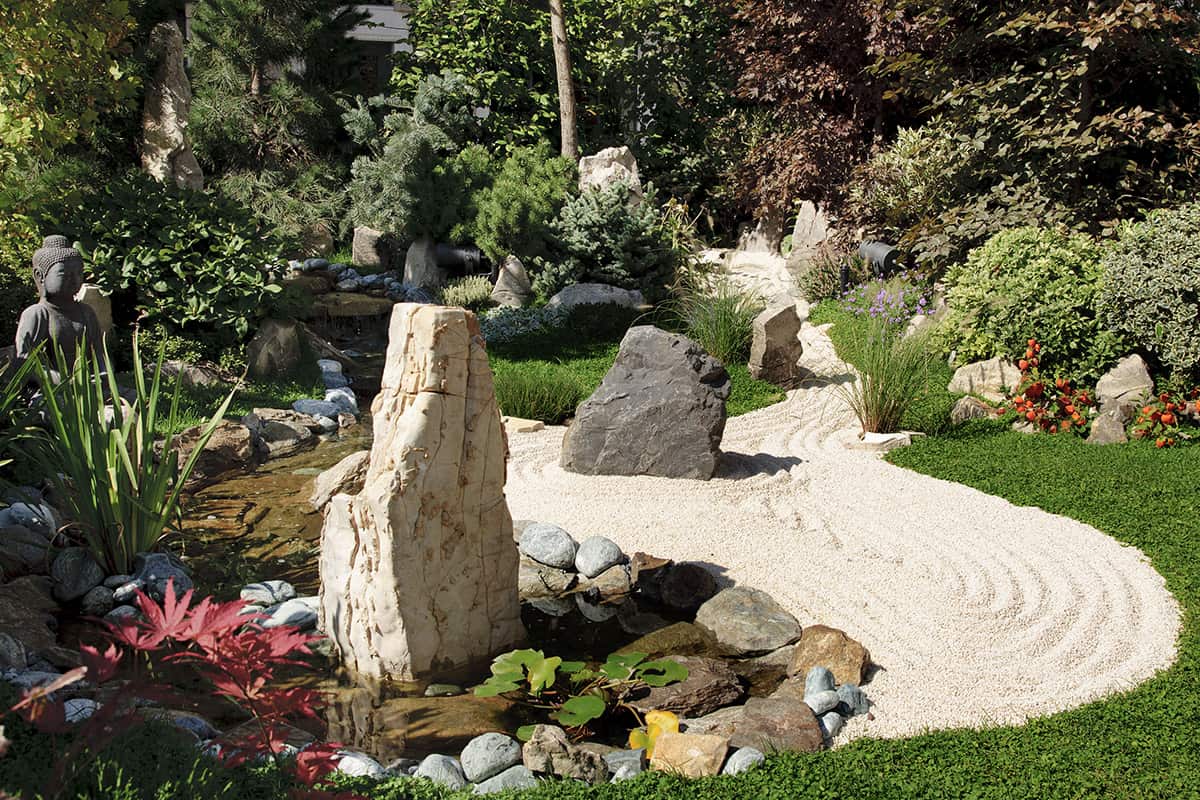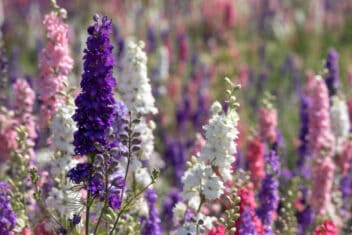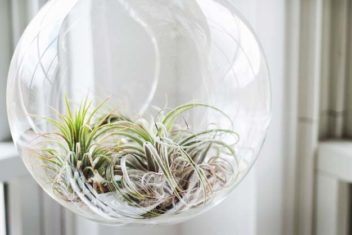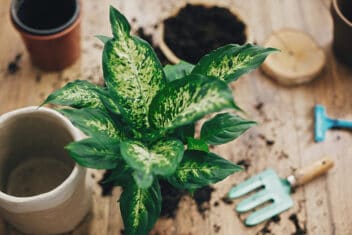If you’ve ever spent time in a Zen garden, you’re probably aware of the immense peace they inspire. This isn’t surprising, as the key purpose of this type of garden is meditation and tranquility.
Dry Zen gardens (aka Japanese rock gardens) are popular in hot, arid growing zones but can be created anywhere. Gardens including water add an additional element of centering, though they’re a bit more involved.
You can cultivate your own bit of zen in any space you have available; you don’t need a massive spot. Let’s get started!
Key Elements of a Zen Garden
Unlike most other gardens, Zen garden spaces aren’t reliant on plants. In fact, some of the world’s most beautiful Zen gardens don’t have any plants at all!
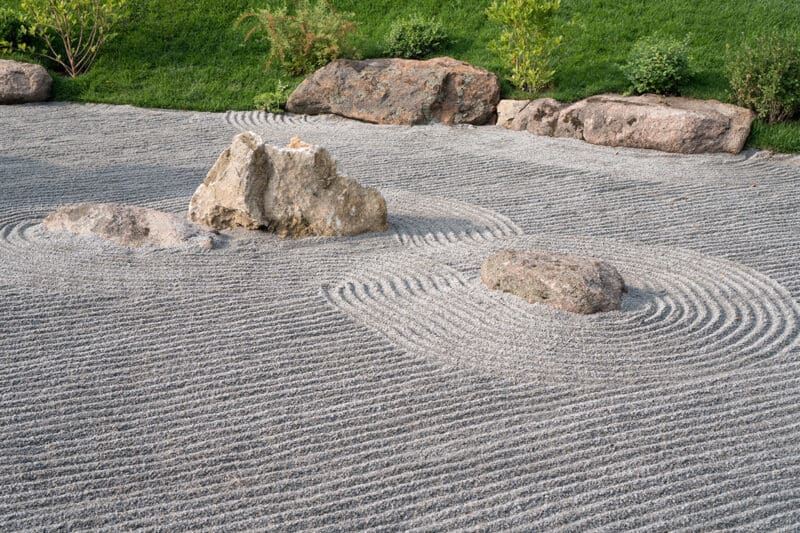
Instead, they contain certain elements that mirror the energies found in nature. You don’t need to use all the ones listed here, of course. Just choose the ones you feel can help you achieve stillness and inner peace.
Some of the key elements you may wish to work into your design include:
- Sand
- Large rocks or stones
- Some type of water element
- Plants
- Lanterns
- Bridges
- Seating
Preparation
Before you start making your Zen garden, you’ll need to clear out an appropriate space. Remove any old plants, unless there are a couple of trees that you really like. You can incorporate those into your design instead of hacking them down.
Once you’ve dug up old plants and cleared away the detritus, make sure the ground is leveled. Then, put down landscaping fabric or another weed-deterring ground cover. The last thing you want is a bunch of dandelions and crabgrass poking up through your carefully curated designs.
Sand
If you have a fair bit of space to create your Zen garden, then find a good resource for white sand or fine gravel. You’ll need a lot of it.
The sand represents purity and is raked into ripples to represent water. Alternatively, whether raked or left smooth, it evokes a sense of sacred emptiness.
In other words, you’re trying to recreate the space between breaths or the stillness one aims to achieve when one quiets their racing thoughts.
Rocks
Have you ever tried to carry a huge, heavy rock for any great distance? Then you probably already have a sense of what rocks represent in a Zen garden.
Rocks, referred to as Ishi, represent strength and endurance. Are you working in a large space? Then head over to your local hardware store or building center. See what they have available, and decide what kind of aesthetic you’d like for your space.
Organic textures and shapes work beautifully in a garden that’s in harmony with flowing natural elements around it. Alternatively, sleek marble can look fantastic in a minimalist setting.
Check to see your options and let them (and your own leanings) inform your design decisions.
Once your elements, place them asymmetrically in the sand or gravel. Then rake that material around them in interesting patterns. Feel free to place others around the garden, in a patch of moss, or under a tree, or wherever it feels right to do so.
Water
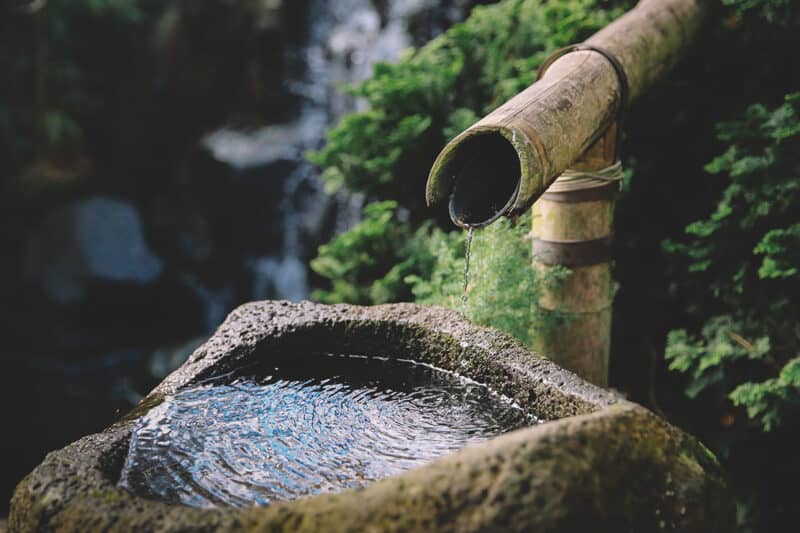
It’s entirely up to you whether you’d like to include water in your garden. Some Zen garden aficionados prefer a dry aesthetic. They might not even have plants around but focus entirely on sand, gravel, rocks, and wood.
Others, however, revel in the energy that a water element can provide.
If you have the space for it, consider sinking a pond into your Zen design. Hey, if you’re working on a massive scale, you could even get a waterfall sort of thing going.
That said, if you—like most readers—have a smaller space to work with, then choose an appropriately sized water element. Wooden barrel ponds look great in many environments.
Alternatively, you could install a small fountain or one of those archway thingers that creates a curtain of water.
Plants
What kind of plants do you envision for this kind of space? Would you like dense, lush greenery around the periphery? Or are you aiming for simplicity?
If it’s the former, consider creating tiered plantings in a few key spaces. Try a large tree that has a couple of shrubs beneath it. Then plant some creeping plants around the bottom, so it spreads out organically.
Below are just a few species you may want to incorporate:
- Pine
- Juniper
- Yew
- Cedar
- Japanese Maple
- Ferns
- Azaleas
- Rhododendrons
- Wisteria
- Peonies
- Bamboo
- Pachysandra
- Creeping Thyme
- Moss (so much moss)
If you have a pond in your garden, try planting water-loving plants around the periphery. Get some lotuses or other water lilies growing in there too.
If so desired, you can also add some koi so you can watch them as part of your meditation practice.
Wood
Zen gardens incorporate as much natural material as possible. As such, if you like to have walkways, screens, or seating areas, consider using wood as your building material.
If you do decide to incorporate wood into your design, consider cedar or ebony. Cedar has a gorgeous natural color and is also great for fending off unwanted insects.
Ebony juxtaposes beautifully against the white sand or gravel for intense aesthetic appeal.
Seating
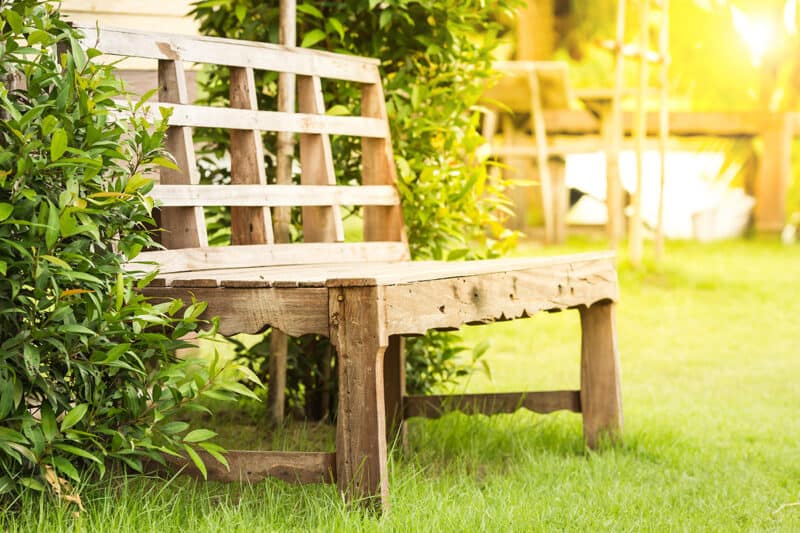
One of the main reasons why people create Zen gardens is so they can spend time in them.
Are you planning to spend hours sitting peacefully in your space? Then be sure to create a seating area that isn’t going to numb out your butt within minutes.
Your seating area can be as simple as a wooden or stone bench. Rattan furniture works well too and can tolerate all kinds of weather.
Consider placing a few seating areas around the space. This way, you can sit in a shady spot at noon or by the water at dusk.
Bridges
Bridges represent the journey we’re all taking towards enlightenment (we hope). If the space you’re creating is quite large, think about having a wooden bridge built across that pond we mentioned earlier.
Alternatively, you can create a small bridge to add height and interest to a wooden walkway.
Bridges also offer a change in perspective, however small. Just by elevating ourselves slightly, we see aspects of the world around us in new ways.
If you’re working with a small space, you can get a bridge-shaped garden sculpture or fountain instead.
Lanterns
You may have noticed that lanterns shed light around them, so you may have intuited that lanterns symbolize enlightenment. In fact, the dai-dōrō stone lanterns so common in Zen gardens represent the five elements found in Buddhist cosmology.
The part that touches the ground represents the earth. Then as you move upwards on the lantern, you find pieces that represent water, fire (the light or flame within), then air, and finally spirit.
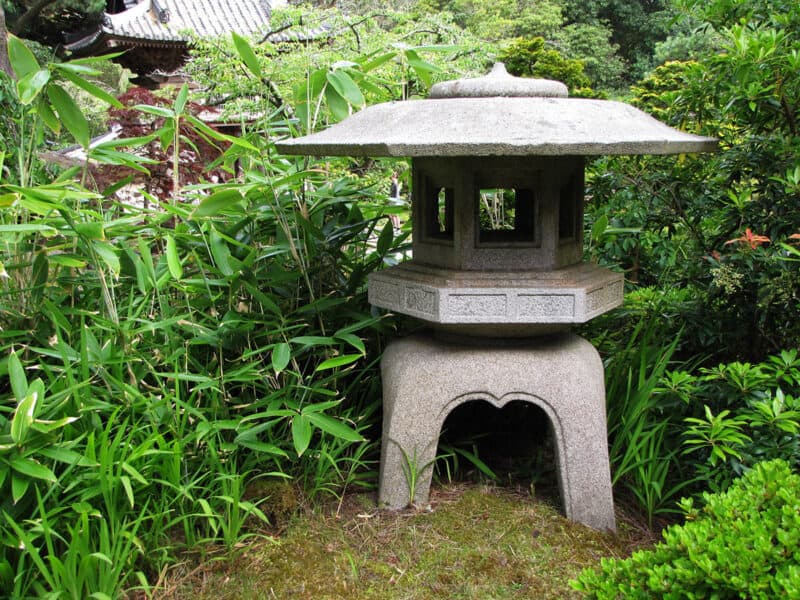
These stone lanterns serve as reminders that we return to our original, elemental energy forms after our physical bodies die.
In addition to stone lanterns, you can also hang real ones around your space. These will allow you to enjoy your garden at night, as well as during the day.
The Contents of Your Zen Garden
Here’s what you need to use your garden to its fullest potential.
Tools and Accessories
A Zen rake is pretty much invaluable for creating those gorgeous ripples effects in the sand. These are usually made out of wood—most often beech.
You can buy one online or make one yourself quite easily.
Depending on the aesthetic you’d like to cultivate, feel free to add other decorative elements to your garden. Do wild birds make you happy? Consider a bird feeder nearby, or even use a small birdbath fountain as part of your water element.
Some people like to add statues or sculptures to their Zen spaces. Usually, just one or two are added to avoid clutter. If you like sculptures, consider a figure of Buddha or a pagoda tucked in amongst some plants.
Zen Aesthetics in Any Space
Remember that you don’t need to have a huge yard to create a Zen garden. You can easily transform a balcony or patio into a mini-meditation space by incorporating these same elements. Similarly, you can also cultivate a Zen garden indoors.
Sure, your partner or housemate might have issues with you spreading sand all over the living room floor.
As such, you can get creative with the elements listed earlier. Get yourself a small tabletop sand garden kit with a mini rake. Have a bubbling mini fountain in a corner, even if you know if your cat is going to drink out of it.
Get yourself some hanging and potted plants, and either a zafu cushion or meditation chair. If you’d like to section this space off from the rest of your house, get a folding wooden screen to keep this area safe and sacred.
Any space at all can be a Zen garden. It’s all about the mindset you bring to it, and the peace it can bring you in turn.
